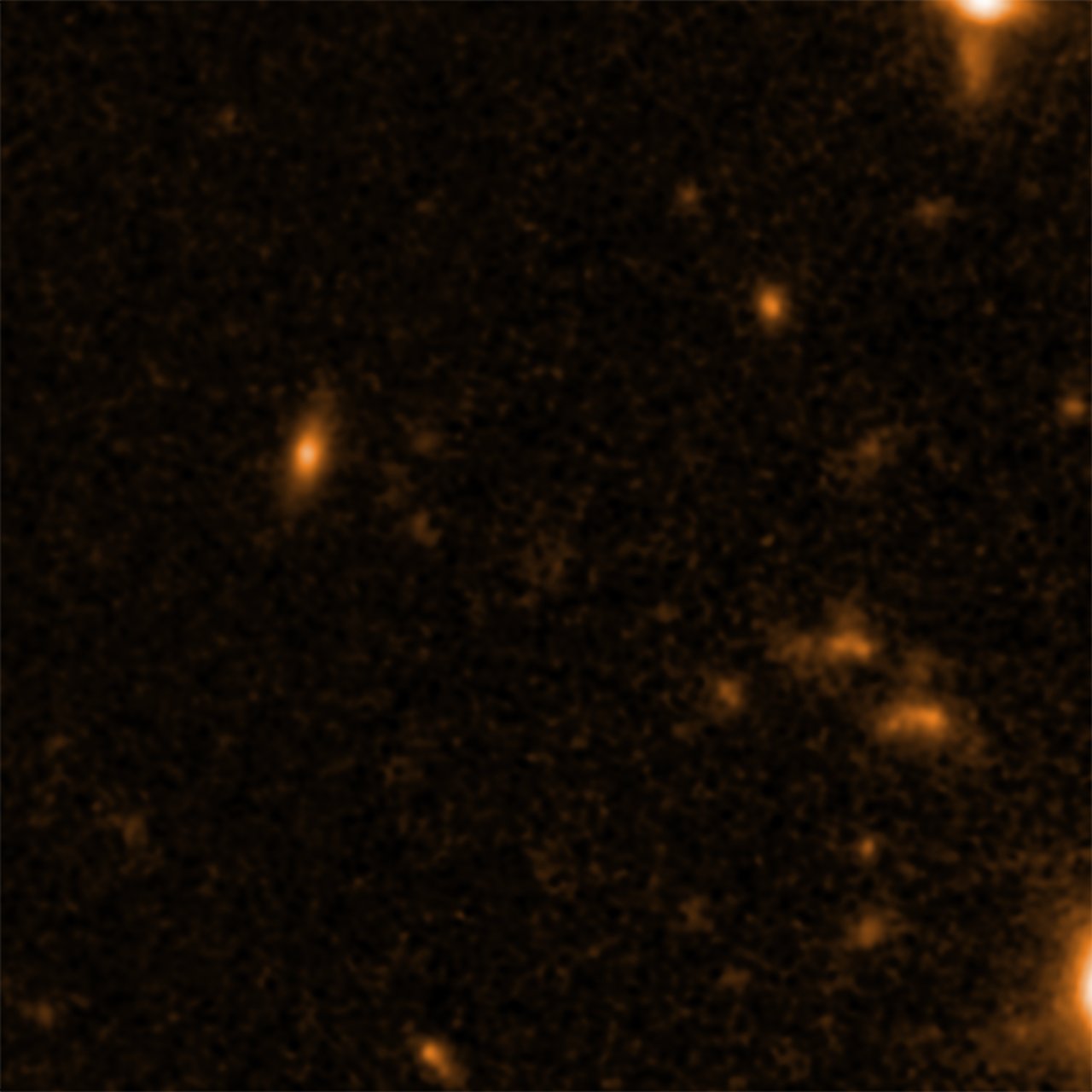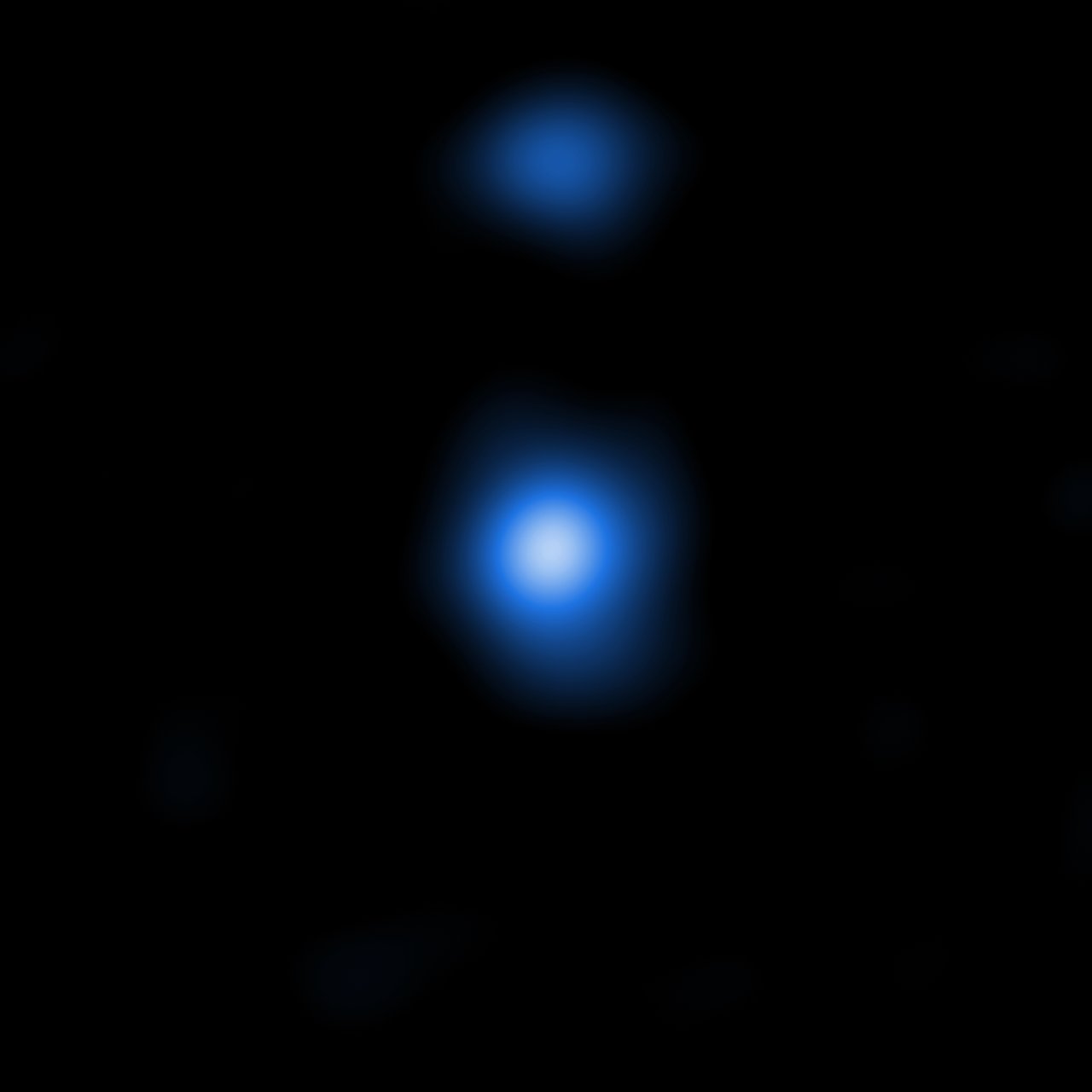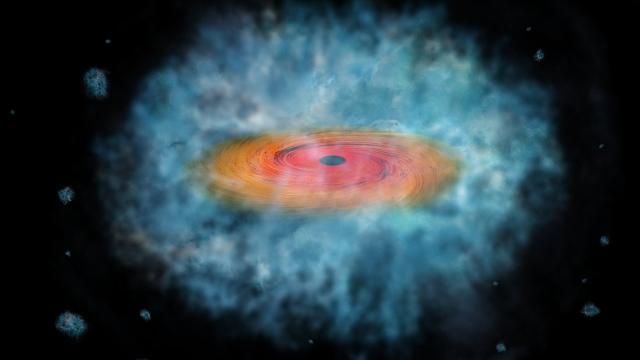Among the (many) mysteries surrounding the gigantic black holes that live at the centre of galaxies is just how they managed to get so big, so fast. Finally, scientists have come up with an explanation for their improbably large existence.
Artist’s concept of black hole formation (Image: NASA/CXC/M. Weiss)
Based on what we know about black holes and how quickly they grow, the incredible size of supermassive black holes simply doesn’t add up. And yet, they exist. New Hubble and Chandra images suggest that they formed directly from huge clouds of gas.
Researchers had previously posited that giant black holes were formed by mergers of smaller black holes. Yet even this would require that they expanded at a faster rate than we’ve ever seen so far. However, if instead of first becoming a star and then collapsing, they formed directly from clouds of gas, the timeline would make more sense. Those gassy clouds would form into “black hole seeds”, which would then collapse in on themselves. Eventually they would grow into supermassive black holes.
To test this theory, researchers from Italy’s National Institute for Astrophysics and Scuola Normale Superiore had the Hubble, Chandra and Spitzer telescopes search for evidence of black hole seeds. Both Hubble and Chandra was able to record two separate instances of what appear to be black hole seeds. The details will be published in a forthcoming issue of Monthly Notices of the Royal Astronomical Society (you can read a working version of the paper on ArXiv).

Black hole seeds as seen by Hubble (Image: NASA/STScI/ESA)

Black hole seeds as seen by Chandra (Image: NASA/CXC/Scuola Normale Superiore/Pacucci)
While these two new images lend credibility to the black hole seed theory, researchers still aren’t calling the matter settled. “Black hole seeds are extremely hard to find and confirming their detection is very difficult,” co-author Andrea Grazian of Italy’s National Institute for Astrophysics said in a statement. “However, we think our research has uncovered the two best candidates so far.”
